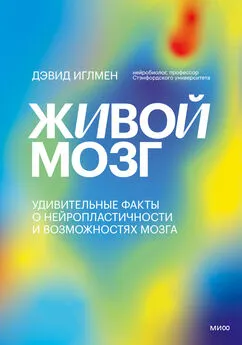Дэвид Иглмен - Живой мозг
- Название:Живой мозг
- Автор:
- Жанр:
- Издательство:Манн, Иванов и Фербер
- Год:2021
- ISBN:978-5-00169-987-3
- Рейтинг:
- Избранное:Добавить в избранное
-
Отзывы:
-
Ваша оценка:
Дэвид Иглмен - Живой мозг краткое содержание
Живой мозг - читать онлайн бесплатно ознакомительный отрывок
Интервал:
Закладка:
Merzenich MM (1998). Long-term change of mind. Science 282 (5391): 1062–1063.
Merzenich MM et al. (1984). Somatosensory cortical map changes following digit amputation in adult monkeys. J Comp Neurol 224: 591–605.
Miller TC, Crosby TW (1979). Musical hallucinations in a deaf elderly patient. Ann Neurol 5: 301–302.
Mitchell SW (1872). Injuries of Nerves and Their Consequences. Lippincott.
Montague PR, Eagleman DM, McClure SM, Berns GS (2002). Reinforcement learning. In Encyclopedia of Cognitive Science. Macmillan.
Moosa AN et al. (2013). Long-term functional outcomes and their predictors after hemispherectomy in 115 children. Epilepsia 54 (10): 1771–1779.
Muckli L, Naumer MJ, Singer W (2009). Bilateral visual field maps in a patient with only one hemisphere. Proc Natl Acad Sci USA 106 (31): 13034–13039.
Muhlau M et al. (2006). Structural brain changes in tinnitus. Cereb Cortex 16: 1283–1288.
Nagel SK, Carl C, Kringe T, Märtin R, König P (2005). Beyond sensory substitution — learning the sixth sense. J Neural Eng 2 (4): R13–26.
Nau AC, Pintar C, Arnoldussen A, Fisher C (2015). Acquisition of visual perception in blind adults using the BrainPort artificial vision device. Am J Occup Ther 69 (1): 1–8.
Neely RM, Piech DK, Santacruz SR, Maharbiz MM, Carmena JM (2018). Recent advances in neural dust: Towards a neural interface platform. Curr Opin Neurobiol 50: 64–71.
Neville H, Bavelier D (2002). Human brain plasticity: Evidence from sensory deprivation and altered language experience. Prog Brain Res 138: 177–188.
Noë A (2009). Out of Our Heads. Hill and Wang.
Norimoto H, Ikegaya Y (2015). Visual cortical prosthesis with a geomagnetic compass restores spatial navigation in blind rats. Curr Biol 25 (8): 1091–1095.
Nottebohm F (2002). Neuronal replacement in adult brain. Brain Res Bull 57 (6): 737–749.
Novich SD, Eagleman DM (2015). Using space and time to encode vibrotactile information: Toward an estimate of the skin’s achievable throughput. Exp Brain Res 233 (10): 2777–2788.
Nudo RJ, Milliken GW, Jenkins WM, Merzenich MM (1996). Use-dependent alterations of movement representations in primary motor cortex of adult squirrel monkeys. J Neurosci 16 (2): 785–807.
O’Brien J, Bloomfield SA (2018). Plasticity of retinal gap junctions: Roles in synaptic physiology and disease. Annu Rev Vis Sci 4: 79–100.
O’Regan JK, Noë A (2001). A sensorimotor account of vision and visual consciousness. Behav Brain Sci 24 (5): 939–973; 973–1031.
Orsetti M, Casamenti F, Pepeu G (1996). Enhanced acetylcholine release in the hippocampus and cortex during acquisition of an operant behavior. Brain Res 724: 89–96.
Ortiz-Terán L et al. (2016). Brain plasticity in blind subjects centralizes beyond the modal cortices. Front Syst Neurosci 10: 61.
Ortiz-Terán L et al. (2017). Brain circuit-gene expression relationships and neuroplasticity of multisensory cortices in blind children. Proc Natl Acad Sci 114 (26): 6830–6835.
Osinski D, Hjelme DR (2018). A sensory substitution device inspired by the human visual system. 11th International Conference on Human System Interaction.
Parsons B, Novich SD, Eagleman DM (2013). Motor-sensory recalibration modulates perceived simultaneity of cross-modal events. Front Psychol 4: 46.
Pascual-Leone A, Amedi A, Fregni F, Merabet L (2005). The plastic human brain cortex. Annu Rev Neurosci 28: 377–401.
Pascual-Leone A, Hamilton R (2001). The metamodal organization of the brain. In Vision: From Neurons to Cognition, edited by C Casanova and M Ptito, 427–445. Elsevier Science.
Pascual-Leone A, Peris M, Tormos JM, Pascual AP, Catala MD (1996). Reorganization of human cortical motor output maps following traumatic forearm amputation. Neuroreport 7: 2068–2070.
Pasupathy A, Miller EK (2005). Different time courses of learning-related activity in the prefrontal cortex and striatum. Nature 433 (7028): 873–876.
Penfield W (1961). Activation of the record of human experience. Ann R Coll Surg Engl 29 (2): 77–84.
Perrett SP, Dudek SM, Eagleman DM, Montague PR, Friedlander MJ (2001). LTD induction in adult visual cortex: Role of stimulus timing and inhibition. J Neurosci 21 (7): 2308–2319.
Petitto LA, Marentette PF (1991). Babbling in the manual mode: Evidence for the ontogeny of language. Science 251: 1493–1496.
Poirier C, De Volder AG, Scheiber C (2007). What neuroimaging tells us about sensory substitution. Neurosci Biobehav Rev 31: 1064–1070.
Pons TP, Garraghty PE, Ommaya AK, Kaas JH, Taub E, Mishkin M (1991). Massive cortical reorganization after sensory deafferentation in adult macaques. Science 252: 1857–1860.
Proulx MJ, Stoerig P, Ludowig E, Knoll I (2008). Seeing “where” through the ears: Effects of learning-by-doing and long-term sensory deprivation on localization based on image-to-sound substitution. PLoS One 3 (3): e1840.
Ptito M, Fumal A, De Noordhout AM, Schoenen J, Gjedde A, Kupers R (2008). TMS of the occipital cortex induces tactile sensations in the fingers of blind Braille readers. Exp Brain Res 184 (2): 193–200.
Rajangam S, Tseng PH, Yin A, Lehew G, Schwarz D, Lebedev MA, Nicolelis MA (2016). Wireless cortical brain-machine interface for whole-body navigation in primates. Sci Rep 6: 22170.
Ramachandran VS (1993). Behavioral and MEG correlates of neural plasticity in the adult human brain. Proc Natl Acad Sci USA 90: 10413–10420.
Ramachandran VS, Rogers-Ramachandran D, Stewart M (1992). Perceptual correlates of massive cortical reorganization. Science 258: 1159–1160.
Rao RP, Sejnowski TJ (2003). Self-organizing neural systems based on predictive learning. Philos Transact A Math Phys Eng Sci 361 (1807): 1149–1175.
Raz N, Amedi A, Zohary E (2005). V1 activation in congenitally blind humans is associated with episodic retrieval. Cereb Cortex 15: 1459–1468.
Renier L, Anurova I, De Volder AG, Carlson S, VanMeter J, Rauschecker JP (2010). Preserved functional specialization for spatial processing in the middle occipital gyrus of the early blind. Neuron 68 (1): 138–148.
Renier L, De Volder AG, Rauschecker JP (2014). Cortical plasticity and preserved function in early blindness. Neurosci Biobehav Rev 41: 53–63.
Ribot T (1882). Diseases of the Memory: An Essay in the Positive Psychology. New York: D. Appleton.
Roberson ED, Sweatt JD (1999). A biochemical blueprint for long-term memory. Learn Mem 6 (4): 381–388.
Rosenzweig MR, Bennett EL (1996). Psychobiology of plasticity: Effects of training and experience on brain and behavior. Behav Brain Res 78: 57–65.
Royer S, Pare D (2003). Conservation of total synaptic weight through balanced synaptic depression and potentiation. Nature 422 (6931): 518–522.
Sachdev RNS, Lu SM, Wiley RG, Ebner FF (1998). Role of the basal forebrain cholinergic projection in somatosensory cortical plasticity. J Neurophysiol 79: 3216–3228.
Sadato N, Pascual-Leone A, Grafman J, Deiber MP, Ibanez V, Hallett M (1998). Neural networks for Braille reading by the blind. Brain 121: 1213–1229.
Sampaio E, Maris S, Bach-y-Rita P (2001). Brain plasticity: “Visual” acuity of blind persons via the tongue. Brain Res 908 (2): 204–207.
Sathian K, Stilla R (2010). Cross-modal plasticity of tactile perception in blindness. Restor Neurol Neurosci 28 (2): 271–281.
Schulz LE, Gopnik A (2004). Causal learning across domains. Dev Psychol 40: 162–176.
Schweighofer N, Arbib MA (1998). A model of cerebellar metaplasticity. Learn Mem 4 (5): 421–428.
Sharma J, Angelucci A, Sur M (2000). Induction of visual orientation modules in auditory cortex. Nature 404: 841–847.
Simon M (2019). How I became a robot in London — from 5,000 miles away. Wired.
Singh AK, Phillips F, Merabet LB, Sinha P (2018). Why does the cortex reorganize after sensory loss? Trends Cogn Sci 22 (7): 569–582.
Smirnakis SM, Brewer AA, Schmid MC, Tolias AS, Schüz A, Augath M, Inhoffen W, Wandell BA, Logothetis NK (2005). Lack of long-term cortical reorganization after macaque retinal lesions. Nature 435 (7040): 300–307.
Southwell DG, Froemke RC, Alvarez-Buylla A, Stryker MP, Gandhi SP (2010). Cortical plasticity induced by inhibitory neuron transplantation. Science 327 (5969): 1145–1148.
Spedding M, Gressens P (2008). Neurotrophins and cytokines in neuronal plasticity. Novartis Found Symp 289: 222–233; 233–240.
Steele CJ, Zatorre RJ (2018). Practice makes plasticity. Nat Neurosci 21 (12): 1645.
Stetson C, Cui X, Montague PR, Eagleman DM (2006). Motor-sensory recalibration leads to an illusory reversal of action and sensation. Neuron 51 (5): 651–659.
Tapu R, Mocanu B, Zaharia T (2018). Wearable assistive devices for visually impaired: A state of the art survey. Pattern Recognit Lett.
Thaler L, Goodale MA (2016). Echolocation in humans: An overview. Wiley Interdiscip Rev Cogn Sci 7 (6): 382–393.
Thiel CM, Friston KJ, Dolan RJ (2002). Cholinergic modulation of experience-dependent plasticity in human auditory cortex. Neuron 35: 567–574.
Tulving E, Hayman CAG, Macdonald CA (1991). Long-lasting perceptual priming and semantic learning in amnesia: A case experiment. J Exp Psychol Learn Mem Cogn 17: 595–617.
Udin SH (1977). Rearrangements of the retinotectal projection in Rana pipiens after unilateral caudal half-tectum ablation. J Comp Neurol 173: 561–582.
Velliste M, Perel S, Spalding MC, Whitford AS, Schwartz AB (2008). Cortical control of a prosthetic arm for self-feeding. Nature 453: 1098–1101.
Von Melchner L, Pallas SL, Sur M (2000). Visual behaviour mediated by retinal projections directed to the auditory pathway. Nature 404: 871–876.
Voss P, Gougoux F, Lassonde M, Zatorre RJ, Lepore F (2006). A positron emission tomography study during auditory localization by late-onset blind individuals. Neuroreport 17 (4): 383–388.
Voss P, Gougoux F, Zatorre RJ, Lassonde M, Lepore F (2008). Differential occipital responses in early-and late-blind individuals during a sound-source discrimination task. Neuroimage 40 (2): 746–758.
Weaver IC et al. (2004). Epigenetic programming by maternal behavior. Nat Neurosci 7 (8): 847–854.
Weiss T, Miltner WH, Liepert J, Meissner W, Taub E (2004). Rapid functional plasticity in the primary somatomotor cortex and perceptual changes after nerve block. Eur J Neurosci 20: 3413–3423.
Whitlock JR, Heynen AJ, Shuler MG, Bear MF (2006). Learning induces long-term potentiation in the hippocampus. Science 313 (5790): 1093–1097.
Wiesel TN, Hubel DH (1963). Single-cell responses in striate cortex of kittens deprived of vision in one eye. J Neurophysiol 26: 1003–1017.
Witthoft N, Winawer J, Eagleman DM (2015). Prevalence of learned grapheme-color pairings in a large online sample of synesthetes. PLoS One 10 (3).
Won AS, Bailenson JN, Lanier J (2015). Homuncular flexibility: The human ability to inhabit nonhuman avatars. In Emerging Trends in the Social and Behavioral Sciences, edited by R Scott and M Buchmann, 1–6. John Wiley & Sons.
Yamahachi H, Marik SA, McManus JN, Denk W, Gilbert CD (2009). Rapid axonal sprouting and pruning accompany functional reorganization in primary visual cortex. Neuron 64 (5): 719–729.
Yang TT, Gallen CC, Ramachandran VS, Cobb S, Schwartz BJ, Bloom FE (1994). Non-invasive detection of cerebral plasticity in adult human somatosensory cortex. Neuroreport 5: 701–704.
Zola-Morgan SM, Squire LR (1990). The primate hippocampal formation: Evidence for a time-limited role in memory storage. Science 250 (4978): 288–290.
БЛАГОДАРНОСТИ
Моей карьере в нейрофизиологии помогали расти очень многие люди, которые разделяли и направляли в нужное русло мое восхищение бесконечно изобретательным инструментарием природы и заразили меня азартом охоты за ответами на интересующие меня вопросы. Это мои родители Сирел и Артур, формировавшие мой мозг в его самые чувствительные периоды; это Рид Монтегю, Терри Сейновски и Фрэнсис Крик, продолжавшие дело моих родителей по ковке моего мозга, пока я учился в магистратуре и позже, когда, только-только получив ученую степень, отрабатывал стипендию на научные исследования и делал первые шаги в науке; это толпы моих друзей, студентов и коллег. Я благодарен моим коллегам по Стэнфорду за то, что давали приют нашим пиршествам разума. Здесь просто не хватит места, чтобы поблагодарить всех моих друзей, кому я обязан своими вдохновениями и плодотворными обсуждениями; скажу, однако, что в их числе Дон Вон, Джонатан Даунар, Бретт Менш и все-все студенты, что прошли за эти годы через мою лабораторию. Я говорю спасибо Тристану Ренцу и Скотту Фримену за финансовую поддержку наших исследований в области сенсорного замещения, когда никто еще не решался поверить и вложиться в это наше начинание. Я благодарен своему бывшему аспиранту, а ныне деловому партнеру Скотту Новичу за то, что он не жалел сил наравне со мной, чтобы наша технология Neosensory стала реальностью. Я выражаю глубокую признательность неизменно прирастающей команде нашей компании Neosensory.
Читать дальшеИнтервал:
Закладка:
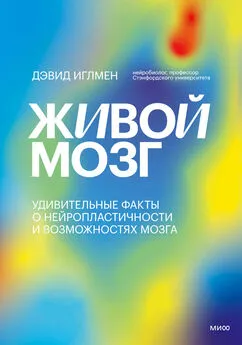
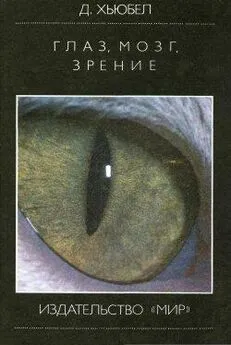
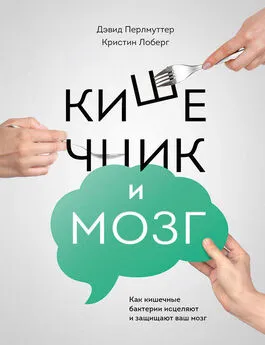


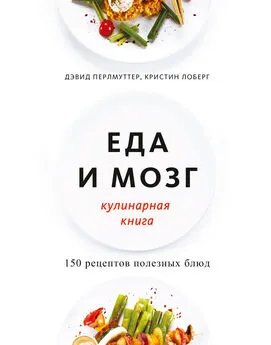
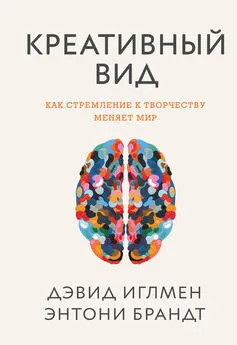
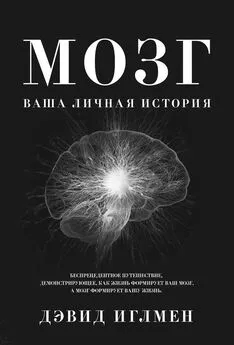
![Дэвид Доу - Почини свой мозг. Программа восстановления нейрофункций после инсульта и других серьезных заболеваний [litres]](/books/1143582/devid-dou-pochini-svoj-mozg-programma-vosstanovlen.webp)
